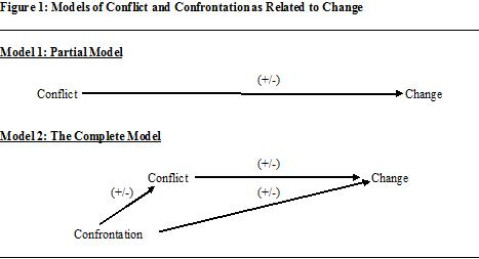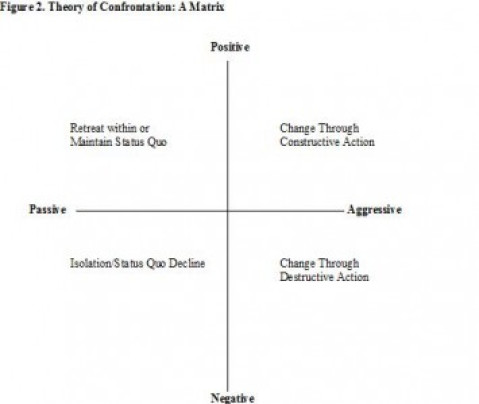Widgetized Section
Go to Admin » Appearance » Widgets » and move Gabfire Widget: Social into that MastheadOverlay zone
Developing Leaders in the Public Sector
Confrontation, Leadership, Ethics and Diversity in the Workplace
A note for our readers: the views reflected by the authors do not reflect the views of ASPA.
By Dan Krejci
Column 1: Confrontation
In his book, National Responsibility and Global Justice, David Miller notes, “Social justice requires a certain form of equality among citizens, global justice will require that same form of equality, but now among human beings everywhere… [We] need to develop a theory of justice that fits the international context, which in several important ways is different from the national context.” Miller proceeds to discuss the differences between the types of justice in order to posit his theory of global justice.
Combine these concepts with the increased emphasis on adopting a global perspective of public administration—especially by the National Association of Schools of Public Affairs and Administration (NASPAA)—and public administrators at all levels must be trained (or retrained) in leadership and ethics in order to be globally focused. This education is enhanced greatly through the increased emphasis on diversity in the workplace (which will be discussed in a later column). In order to enhance this education of leaders, the training must start where challenges begin for leaders—during the phase of confronting a situation.
Figure 1 denotes how conflict affects change in a positive or negative manner. It is not necessary to go to any length to address the idea that conflict may simply promote the status quo.
Defining Confrontation
Merriam–Webster online dictionary notes several definitions of confrontation. One definition is simply the act of being confronted. The definition is problematic since it includes a variation of the word being defined. Another definition notes that confrontation is, “A situation in which people, groups, etc., fight, oppose, or challenge each other in an angry way.” However, confrontation does not have to be hostile in nature, does not need to be a mutual engagement nor does the confrontation require an N equal to at least two—in many instances it involves an N of one.
Confrontation is defined here as an act of facing up to and dealing with a situation that presents itself and cannot be avoided. I refrain from classifying the situation as being only difficult or even a problem. Entities define the situation as good or bad, whether or not the problem is difficult to deal with, and whether there are positive or negative means to deal with the situation. Example: Person A is confronted with a situation that he or she deems a problem with negative outcomes. Person B finds the same situation experienced by A challenging with positive consequences. In these two situations, outcomes or changes to the lives of the people involved may have different outcomes, and these outcomes are based on the characteristics of the entities.
Confrontation
The importance of confrontation was developed because of an internship I had in the city manager’s office for City Y. In addition, this theory is based on a series of articles written with my colleague William Lester, and from my readings of social information-processing theory (SIP)—especially Karen Water’s article in the Phi Kappa Phi Forum titled “Teenage Bullies: Might Not Right.”
In the 2006 Reaching Through Teaching article titled “Incorporating Ethnic and Cross-Cultural Diversity in University Teaching,” William Lester and I defined confrontation as an entity (Y) placed in the state of encountering something (X), and the entity being aware of the confrontation must deal with it. This is not to be confused with conflict, which is a fight, quarrel or opposition between ideas or principles, which needs an N of at least two. As I previously noted, confrontation needs only an N of one. An entity encountering X may respond in one of three ways. First, the entity views the confrontation in a positive manner and reacts accordingly. Second, the entity acknowledges the confrontation and remains neutral. Third, the entity views the confrontation in a negative fashion and remains neutral or responds in a negative manner. Combine these possible reactions with the entity’s personality and you have an idea of what may occur as result of the confrontation (see Figure 2).
The Aggressive-Positive Entity
The aggressive-positive entity when confronting X may view the encounter in a positive way. The type of reaction by an aggressive-positive person does not indicate agreement with a particular viewpoint, rather it means the aggressive-positive individual welcomes the process and its related outcomes. Therefore, the aggressive-positive entity may act in manner that affects constructive change. Granted, this does not preclude the entity from remaining neutral.
The Aggressive-Negative Entity
An aggressive-negative political entity may interpret the confrontation as challenging or problematic and react in a neutral manner or take a more hostile approach to dealing with the confrontation. The entity may affect change through constructive means, yet these constructive means may have destructive outcomes. On the other hand, the entity may use destructive means to affect constructive outcomes. Using peaceful demonstrations is a constructive means, yet when government uses force to quell these peaceful demonstrations then destruction becomes part of the equation. In other words, the entity may see the only way to affect change (even positive change) is through the use of destructive means that have constructive outcomes.
The Passive-Positive/Passive-Negative Entity
A passive-positive entity is not prone to take positive active action unless the confrontation with X is positive and challenging with the benefit of changing the status quo outweighing the entity’s costs to bringing about the change. Therefore, in most cases, the entity is likely to support the status quo. Again, preparation of the entity for confrontation with X is important in order to have a positive outcome. If the passive-negative entity views X at best neutrally or at worst negatively, then the passive-negative entity is likely to do nothing more than remain neutral. Allowing for these assumptions, there appears to be several important implications relating to the education of public administrators, especially in the areas of leadership, ethics and diversity.
Implications: Leadership, Ethics and Diversity Education
The first implication deals with our ability to predict and alter outcomes based on a person’s ability to deal with confrontation. The key to altering outcomes or changes is affected through our ability to prepare for confrontation and our reactions to it. However, in the real world there may be plans dealing with confrontation, there may even be testing of these plans, yet plans usually become useless after something begins. Therefore, a person’s ability to deal with confrontation is an important factor that determines outcomes (this goes for both leaders and their subordinates). This brings us to the second implication—confrontation may lead to change yet conflict cannot take place without confrontation. However, change can be affected by confrontation that does not lead to conflict and must be studied in all its aspects in order to have a better understanding of its nature and how it relates to change. Finally, public administration education that focuses on leadership, ethics and diversity in the workplace must employ a more comprehensive approach—an approach that enhances an administrator’s ability to deal with confrontation and conflict.
Author: Dan Krejci is an associate professor of political science and public administration and Director of the MPA Program at Jacksonville State University, Jacksonville, Alabama. He received his MPA Degree from the University of North Carolina at Charlotte, and his MA and Ph.D. in Political Science from Texas Tech University. He can be reached at [email protected].








Pingback: Developing Leaders in the Public Sector: Confrontation, Leadership, Ethics and Diversity in the Workplace | PA TIMES Online